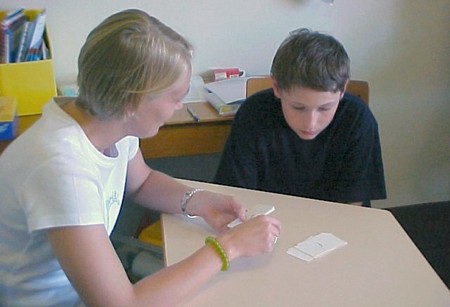Many children with ADHD also have difficulties with speech and language development, and while these are often quite subtle, they can negatively impact on a child’s experience in the classroom. One of the most common difficulties is delayed speech, which is more of an issue in nursery and infant school. Children may have either a minimal vocabulary and tend to speak with short, rather immature sentences, or their speech is sometimes unclear.
If you have a child in your class with ADHD who speaks rapidly, mumbles or has indistinct, unclear speech, sit him towards the front of the class and encourage him to speak when spoken to in as clear a way as possible. If the child has problems with sequencing or has a stutter or stammer, try to give as much support as possible and keep him in a situation which is as anxiety-free as possible. Some children show no embarrassment with stuttering but others can become severely uncomfortable, and an understanding, empathetic approach can make all the difference.

The Social Use of Language Programme (SULP) for varying age groups designed by Wendy Rinaldi (www.wendyrinaldi.com) is an excellent way of helping children with significant language difficulties. There are programmes for different age groups, illustrated books with fun characters, and multi-sensory activities to help children overcome difficulties with their listening comprehension. There are also programmes to help children better understand dual messages, multiple meanings and assumed knowledge. If you have an understanding of these subtle difficulties, it is possible to phrase requests and carry out conversations in such a way that the message is clearer, multiple meanings are avoided and no assumptions are made.
The effective use of language can be affected by many ADHD difficulties, including making eye contact, listening, being aware of self and others, interacting appropriately with others without being impulsive, and being aware of the emotions of others. Encourage children to have two-way communication with appropriate listener-speaker exchange. Help them to be aware of their tendency to hog the conversation and not listen, or to continually and impulsively interrupt the other person.
In addition, talk to the child’s speech therapist about what other help may be available and whether or not speech and language support in the classroom would be advisable.